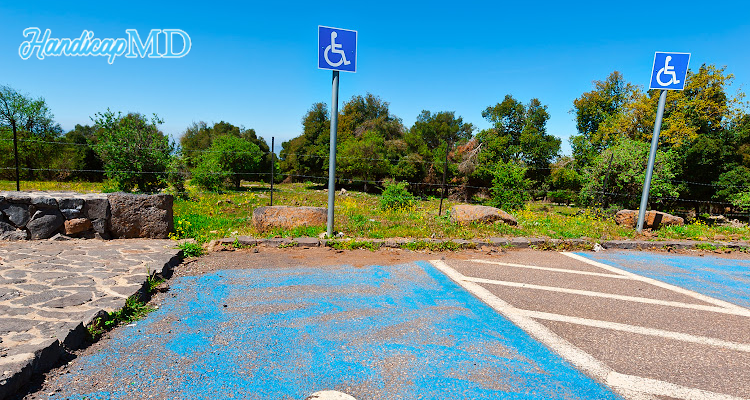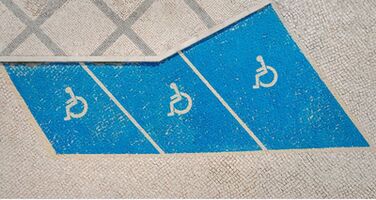
Tips for Displaying Your Handicap Placard Correctly in Montana
Introduction
When it comes to ensuring accessibility and convenience for individuals with disabilities, Montana takes the matter seriously. Displaying your handicap permit correctly is not just a matter of compliance with the law; it's a way to make life easier for those who rely on these permits. In this comprehensive guide, we'll walk you through the ins and outs of displaying your handicap permit correctly in Montana. From the basics to some lesser-known tips, we've got you covered.
Understanding Handicap Placards
In this section, we'll delve into the basics of disability placards and their importance.
What is a Handicap Placard?
A handicap placard, also known as a disabled parking permit, is a special parking pass issued to individuals with mobility challenges. It allows them to park in designated accessible parking spaces, closer to their destination.
The Importance of Proper Display
Properly displaying your disability permit is crucial. Failing to do so can result in fines and inconveniences for both you and those who genuinely need these spaces.
Tips for Displaying Your Handicap Placard Correctly in Montana
In this section, we'll outline the specific guidelines and tips for Montana residents.
Ensure Visibility
Always make sure the placard is clearly visible from the outside of your vehicle. Hang it on the rearview mirror, and ensure it's not obscured by any objects or tinted windows.
Position Matters
Place the permit so that it is directly facing out of the windshield. This makes it easy for law enforcement and parking attendants to identify the valid permit.
Temporary vs. Permanent
Differentiate between temporary and permanent permits. Montana issues both types, and it's essential to use the correct one. Temporary passes have a specified expiration date.
Observe Time Limits
Pay attention to time limits. While authorized holders are allowed to park in accessible spaces, they are still subject to parking time restrictions unless otherwise posted.
Respect Reserved Spaces
Only park in designated parking spaces. Do not park in spots reserved for other purposes, such as loading zones or fire lanes.
Educate Passengers
Inform your passengers about the rules. Make sure they understand the importance of proper pass display and compliance with the law.
If you're a MT resident with a disability pass, it's essential to ensure that you display it correctly to avoid any inconvenience or fines. Properly displaying your disability placard not only helps you access designated parking spaces but also shows respect for those who genuinely need these facilities. Here are addiitional guidelines on how to correctly display your pass in MT.
Hang It on the Rearview Mirror
One of the most straightforward and convenient ways to display your handicap permit is by hanging it on your rearview mirror. When using this method, make sure that the front face, which usually contains the international symbol of access, is visible from the outside. This way, parking enforcement officers can easily verify its validity without having to approach your vehicle.
Ensure Clear Visibility
When hanging the placard on your rearview mirror, ensure that it does not obstruct your view while driving. It should be hung high enough to prevent any interference with your line of sight, and it must not dangle in a way that could distract you. Safety should always be a top priority.
Remove It When Driving
While it's essential to display your disability pass when parked in designated accessible parking spaces, it's equally important to remove it when driving. MT law requires that the pass be removed from the rearview mirror while the vehicle is in motion. This ensures that the driver's vision is unobstructed, reducing the risk of accidents.
Avoid Sunlight Damage
MT's sunlight can be harsh, especially during the summer months. Prolonged exposure to direct sunlight can cause your disability permit to fade or become damaged. To prevent this, consider using a sun visor or a shade to protect it when your vehicle is parked for an extended period.
Replace Damaged Placards
If your handicap pass becomes damaged, faded, or difficult to read, it's crucial to replace it promptly. A damaged placard may not be easily identifiable as a valid one, potentially leading to confusion or fines. To obtain a replacement placard, contact the Montana Department of Motor Vehicles for assistance.
Keep Your Documentation Handy
It's advisable to keep a copy of your handicap parking permit, along with any necessary documentation, in your vehicle. In the event of any questions or concerns raised by authorities, having these documents readily available can help clarify your eligibility and avoid any misunderstandings.
Frequently Asked Questions (FAQs)
Can I use my MT disability permit in other states?
Yes, Montana passes are recognized in all U.S. states and territories, allowing you to enjoy accessible parking nationwide.
What should I do if my disability pass is lost or stolen?
If your pass is lost or stolen, you should report it to the MT Department of Justice and request a replacement.
Is there an application process for obtaining a permit in MT?
Yes, you can apply for a disability permit in Montana through the DOJ. The process involves submitting a medical certification form together with the necessary application form.
Can I lend my disability pass to someone else?
No, these are non-transferable and should only be used by the person to whom they were issued.
Are there fines for misuse of a disability permit in MT?
Yes, there are fines for misusing a pass, including parking in accessible spaces without a legitimate need. Fines can vary, so it's essential to comply with the law.
How often should I renew my handicap pass in MT?
Temporary ones are typically valid for six months, while permanent ones are valid for four years. Be sure to renew before it expires.
Conclusion
Displaying your handicap placard correctly in Montana is not just a legal requirement; it's a way to ensure that individuals with disabilities can access the services they need. By following these tips and guidelines, you contribute to a more inclusive and accessible community for everyone. Remember, it's not just about compliance; it's about compassion and understanding.
.png)






